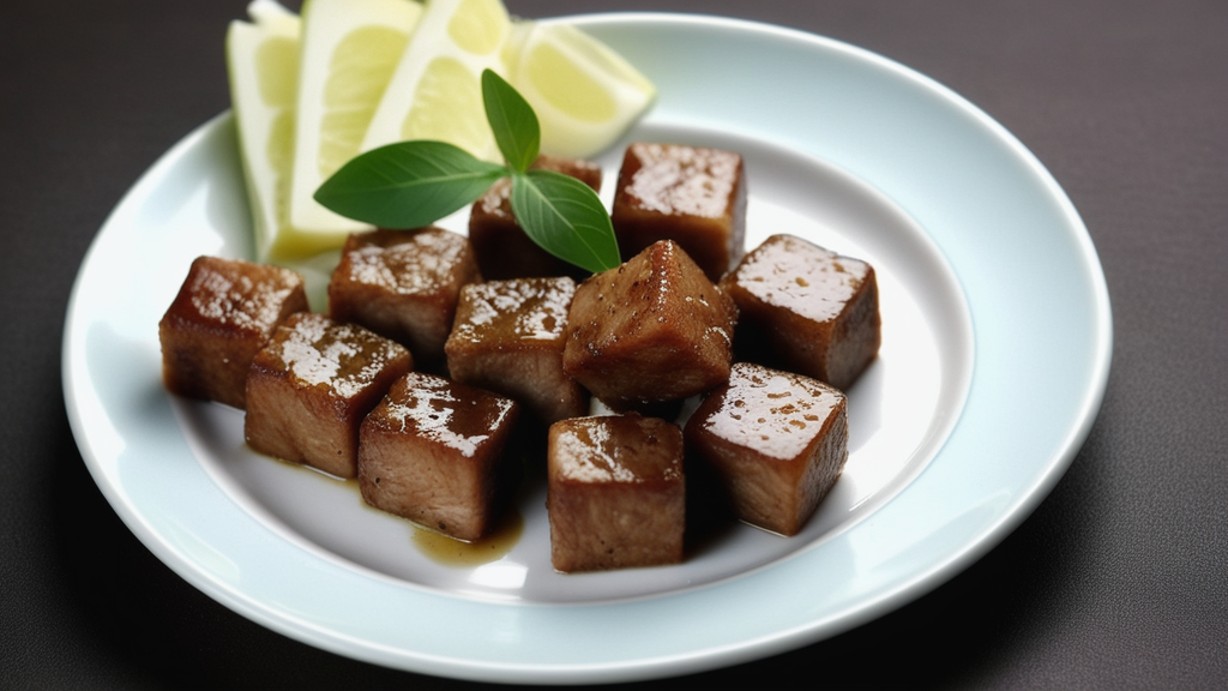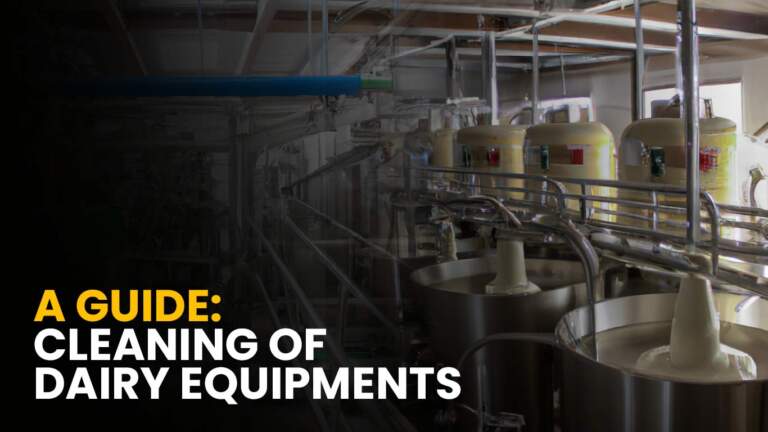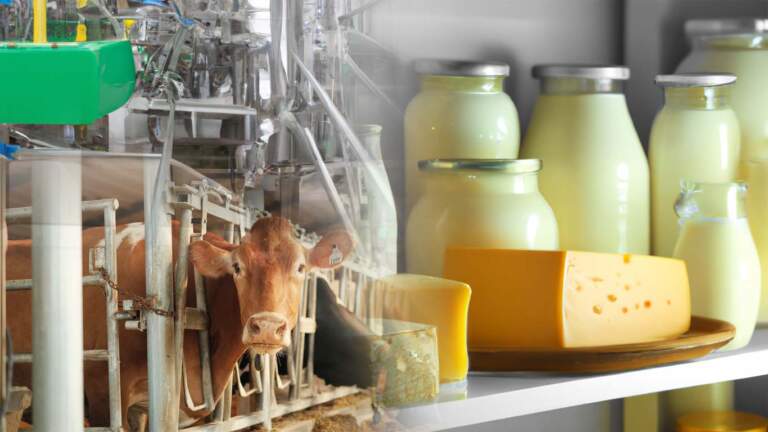How plant-based meat is made? Well, this question is always asked before we think about it. Plant-based meat, also known as meat alternatives or meat substitutes, is made using a variety of plant-based ingredients such as soy, wheat, and pea protein. These ingredients are processed and formulated to mimic the texture, taste, and appearance of traditional animal-based meat products.
The global plant-based meat market is growing, with a value of $5.3 billion in 2021 and a projected value of $33.3 billion by 2031. Vegans often use plant-based meat as a substitute for animal meat to cut back on their consumption of animal goods.
Plant-based meat manufacturers are – Amy’s Kitchen, Inc, Beyond Meat, Impossible Foods, Inc., Maple Leaf Foods etc.
How Plant-Based Meat is Made: Process
The process of making plant-based meat typically involves several steps:
The process of making plant-based meat is a fascinating blend of science, technology, and culinary expertise. Here’s an overview of the general steps involved:
- Selection of Ingredients:
The process begins with carefully selecting plant-based ingredients that will form the foundation of the meat alternative. Common ingredients include soy protein isolate, pea protein, wheat gluten, and other plant-derived components.
- Extraction of Proteins:
The chosen plants undergo a process to extract proteins. This often involves crushing, milling, or separating the protein-rich parts from the rest of the plant material. The goal is to isolate proteins that can mimic the texture and taste of traditional meat.
- Texturization and Binding:
The extracted proteins go through a texturization process to create a fibrous structure similar to that of animal muscle. Binders, such as starches or gums, are added to enhance texture and hold the plant proteins together, providing the characteristic chewiness associated with meat.
- Flavoring and Seasoning:
To replicate the savory taste of meat, plant-based alternatives undergo flavouring and seasoning processes. This may involve the addition of natural flavour compounds, spices, and other ingredients to achieve a taste profile reminiscent of traditional meat.
- Colouring:
Plant-based meat is often coloured to resemble the appearance of animal meat. Natural colourants, such as beet juice for red tones, are used to create a visually appealing product that closely matches the look of conventional meat.
- Processing Techniques:
Various processing techniques, such as extrusion or high-pressure processing, are employed to shape the plant-based mixture into familiar forms like burgers, sausages, or nuggets. These techniques contribute to the final product’s consistency and structure.
- Cooking and Packaging:
Plant-based meat is cooked through methods like baking, steaming, or grilling to enhance its taste and ensure safety. Once cooked, the products are packaged to maintain freshness and extend shelf life. Packaging materials vary but often prioritize sustainability.
- Technological Innovations:
Advancements in food technology play a crucial role in refining the process. Innovations such as 3D printing, precision fermentation, and the use of novel ingredients continue to push the boundaries of what plant-based meat can achieve in terms of taste, texture, and nutritional content.
It’s worth noting that there are different Answers to How Plant-Based Meat is Made and that the specific process can vary depending on the type of plant-based meat product being made and how plant-based meat is made. Different manufacturers may have variations in their processes, and ongoing research and development are leading to continuous improvements. The goal is to create plant-based meat alternatives that not only meet but exceed consumer expectations, providing a satisfying and sustainable option for those seeking alternatives to traditional meat products.
Also, as technology and research advancements, new ways to make plant-based meat are being discovered, like using lab-grown cells from plants or animals.
How the plant-based meat taste?
We have seen How plant-based meat is made. Now, let’s look at How plant-based meat tastes.
Plant-based meat, also known as meat alternatives or meat substitutes, is becoming increasingly popular as more and more people are looking for alternatives to traditional animal-based meat products. One of the most important factors in determining the success of a plant-based meat product is its taste and texture.
The taste of plant-based meat can vary depending on the type of plant-based protein used and the formulation of the product. For example, soy-based plant-based meats tend to have a slightly beany taste, while pea-based plant-based meats have a more neutral taste. In addition, manufacturers often add natural flavours, such as spices and herbs, to enhance the taste of plant-based meat.
The texture of plant-based meat can also vary depending on the type of plant-based protein used and the processing methods employed. Soy-based plant-based meats tend to have a firmer texture, while pea-based plant-based meats can have a softer texture. Plant-based meats are also processed to mimic the texture of animal-based meats, such as ground beef or chicken, by using techniques such as extrusion, shaping, and cooking.
Many people have reported that plant-based meat is similar in taste and texture to traditional animal-based meat products. Some people even prefer the taste and texture of plant-based meat over traditional meat. With the rapid development of technology, plant-based meat manufacturers are constantly working to improve the process of How Plant-Based Meat is Made, and the taste and texture of their products.
It’s worth noting that not all plant-based meats are the same, different types of plant-based meats are made from different ingredients and methods by using How plant-based meat is made, and thus, the taste will differ. Try different brands of plant-based meats and compare the taste to find the one that best suits your taste.
Overall, plant-based meats are becoming a more and more viable alternative to traditional animal-based meats, offering comparable taste and texture while providing the benefits of being a sustainable, cruelty-free, and health-conscious option based on How Plant-Based Meat is Made.
7 Benefits of Plant-Based Meat
- Nutritional Benefits
One of the significant advantages of plant-based meat lies in its nutritional profile. Compared to traditional meat, plant-based alternatives often have lower levels of saturated fats and cholesterol. This makes them an attractive option for individuals seeking a heart-healthy diet without compromising on taste and texture.
- Environmental Impact
Beyond personal health, the environmental impact of traditional meat production has driven many towards plant-based alternatives. The shift is not only about personal health but also about planetary health. Producing plant-based meat has been associated with lower greenhouse gas emissions and reduced land usage, contributing to a more sustainable and eco-friendly food industry.
- Health Considerations
While plant-based diets are generally considered healthy, it’s essential to address potential concerns. Ensuring a balanced diet that includes a variety of plant-based foods is crucial to meeting nutritional needs. Consulting with nutritionists and healthcare professionals can help individuals make informed choices that align with their health goals.
- Culinary Applications
The versatility of plant-based meat cpens up a world of culinary possibilities. From classic burger patties to stir-fries and stews, plant-based alternatives can be seamlessly integrated into a myriad of recipes. The key lies in experimenting with different cooking techniques and flavor pairings to discover the full potential of these alternatives.
- Consumer Perceptions
Consumer perceptions play a pivotal role in the success of plant-based meat. As more people become conscious of their food choices, marketing and education play crucial roles in shaping attitudes. Transparent labelling and effective communication about the benefits of plant-based options contribute to changing consumer perceptions.
- Ethical and Moral Perspectives
Choosing plant-based meat goes beyond personal health benefits; it’s a decision rooted in ethics and morality for many individuals. The desire to reduce animal suffering and contribute to a more compassionate food industry drives the ethical considerations surrounding plant-based diets.
- Global Impact
The global impact of adopting plant-based diets is substantial. While cultural and regional variations influence the rate of adoption, the overall trend is towards a more plant-centric diet. This shift has the potential to address not only health and environmental concerns but also to reshape the dynamics of the food industry on a global scale.
Is plant based meat good for health?
Plant-based meat can be a healthy option when incorporated into a balanced diet. It offers several health benefits compared to traditional meat. Here are some points to consider:
- Reduced Saturated Fats and Cholesterol:
Plant-based meat typically contains lower levels of saturated fats and cholesterol than traditional meat. This can contribute to better heart health and may help in managing cholesterol levels.
- Rich in Plant-based Proteins:
Plant-based meat is a good source of plant-based proteins, often derived from ingredients like soy, peas, and wheat. Proteins are essential for muscle function, and plant-based options can provide an alternative protein source.
- Diverse Nutrient Profile:
Plant-based meat can offer a diverse range of nutrients, including vitamins, minerals, and antioxidants. The variety of plant ingredients used in its production contributes to a more comprehensive nutrient profile.
- Lower Risk of Certain Health Issues:
A diet rich in plant-based foods has been associated with a lower risk of certain health issues, such as cardiovascular diseases and some types of cancers. Choosing plant-based meat can be a part of adopting a healthier lifestyle.
- Weight Management:
Plant-based meat is often lower in calories than traditional meat, which can be beneficial for those aiming for weight management. The lower calorie content, combined with its nutritional value, makes it a suitable option for a balanced diet.
However, it’s essential to note that the healthiness of plant-based meat depends on various factors, including the specific product, how it’s processed, and an individual’s overall dietary choices. As with any dietary decision, moderation and balance are key. Consulting with a healthcare professional or a nutritionist can provide personalized advice based on individual health needs and goals.
References:
- Mateti, T., Laha, A. & Shenoy, P. Artificial Meat Industry: Production Methodology, Challenges, and Future. JOM 74, 3428–3444 (2022).











Leave a Comment